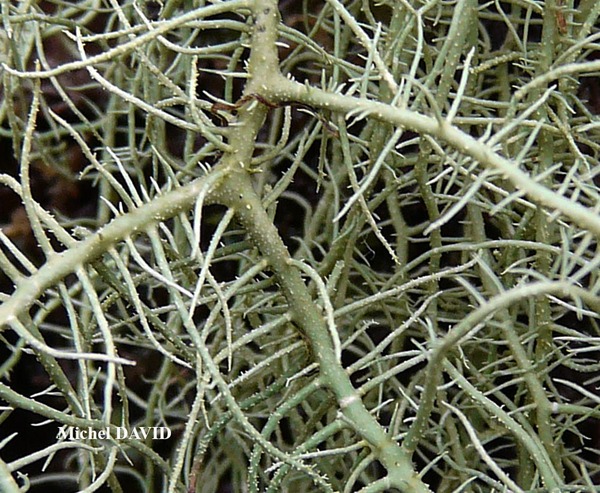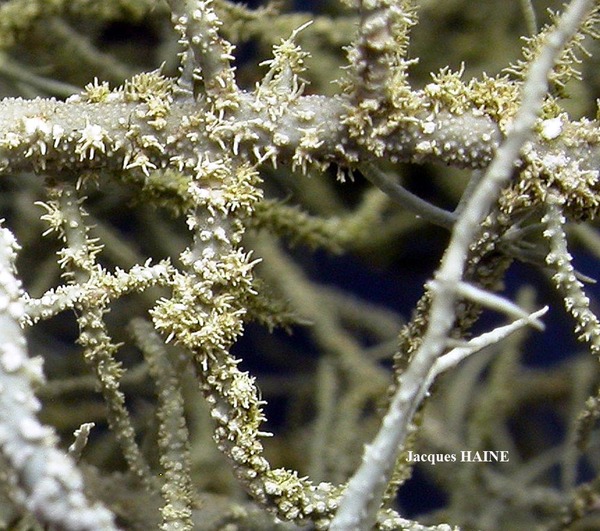Usnea ceratina Ach.
Lichenogr. Univ.: 619, 1810.
Synonyms:
Distribution: N - Frl (Tretiach 1993), Ven (Caniglia & al. 1999, Nascimbene & Caniglia 2000b, 2002c, 2003c, Nascimbene 2005c, 2008c, Nascimbene & al. 2006e, Nascimbene & Marini 2007), TAA (Nascimbene & Caniglia 2000b, 2002c, Caniglia & al. 2002, Nascimbene 2005b, 2006b, 2006c, 2008b, Nascimbene & al. 2006e, 2007b, 2022, Stofer 2006, Nimis & al. 2015), Lomb (Nascimbene 2006, Nascimbene & al. 2006e), Piem (Isocrono & al. 2004), VA (Piervittori & Isocrono 1999), Lig (S- F201643). C - Tosc (Tretiach 1993), Marc, Laz, Abr, Mol (Garofalo & al. 1999, Caporale & al. 2008), Sar (Zedda 2002, 2002b, Rizzi & al. 2011, Neuwirth 2018, Di Nuzzo & al. 2022). S - Camp (Aprile & al. 2002, 2003b), Pugl (Garofalo & al. 1999), Bas, Cal (Puntillo 1996), Si (Merlo 2004).
Description: Thallus fruticose-filamentous, rigid, greenish to greenish grey, shrubby to subpendulous, 20-50 cm long, branching mainly isotomic-dichotomously with divergent to parallel branches. Main branches cylindrical or irregular, ochre-coloured or greenish grey at base, with numerous annular cracks, the segments cylindrical to more or less sausage-like, terete to subangular, usually without foveoles or transverse furrows; fibrils and papillae sparse to numerous, the fibrils perpendicular to the main branches, up to 1 cm long; lateral branches not constricted at attachment point, with wart-like tubercles which become white at the top and bear stipitate, ulcerose soralia and/or isidiomorphs. Soralia originating from the top of tubercles or occasionally on large fibrils, at first punctiform (<1/2 of branch diameter), finally sometimes completely covering the terminal branches; isidiomorphs rare to numerous, 0.1–0.2 mm long, grouped in the soralia. Cortex hard, vitreous in longitudinal section, 6-11% of total branch thickness; medulla dense to compact, 18-28%, pink (rarely white or yellowish); central axis pink to almost red, sometimes white or pale yellow, 26-48%; ratio axis/medulla ranging between 1.1 and 2.7. Apothecia not observed in Italian material. Photobiont chlorococcoid. Spot tests: cortex K-, C-, KC-, P-; medulla K-, C+ yellow, CK+ yellow-orange, P-. Chemistry: cortex with usnic acid; medulla with diffractaic, barbatic and variable amounts of 4-O-demethylbarbatic acids, rarely with squamatic acid.Note: a cool-temperate to boreal-montane lichen also known from the Southern Hemisphere, found on branches of trees in damp forests with frequent fog; most common in the Alps, but occurring throughout the Apennines in mixed beech-fir stands and in relict forests with Taxus (e.g. in Sardinia).
Growth form: Fruticose filamentous
Substrata: bark
Photobiont: green algae other than Trentepohlia
Reproductive strategy: mainly asexual, by thallus fragmentation
Commonnes-rarity: (info)
Alpine belt: absent
Subalpine belt: rather rare
Oromediterranean belt: rather rare
Montane belt: rather common
Submediterranean belt: extremely rare
Padanian area: absent
Humid submediterranean belt: very rare
Humid mediterranean belt: absent
Dry mediterranean belt: absent
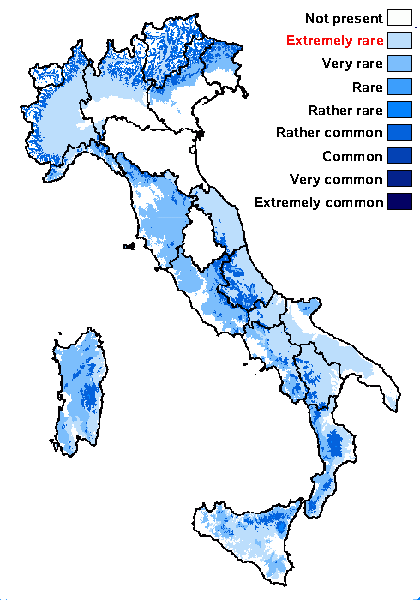
Predictive model
Herbarium samples
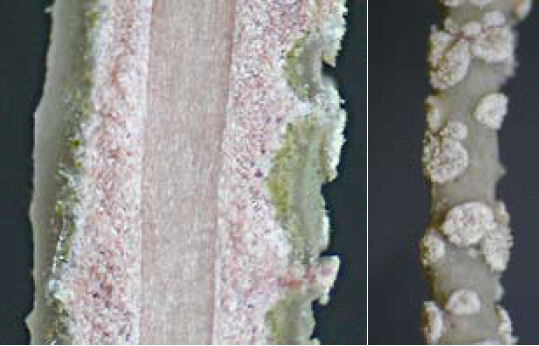
Tiiu Tõrra; Owner: Tiiu Tõrra - Institute of Ecology and Earth Sciences, University of Tartu, Estonia
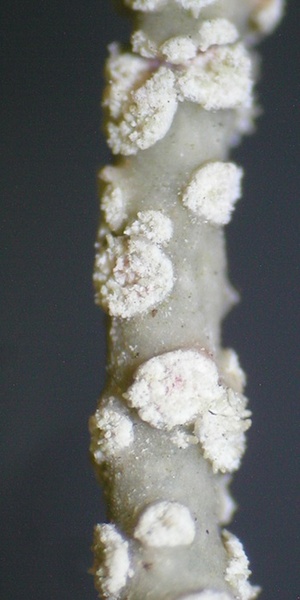
Tiiu Tõrra; Owner: Tiiu Tõrra - Institute of Ecology and Earth Sciences, University of Tartu, Estonia
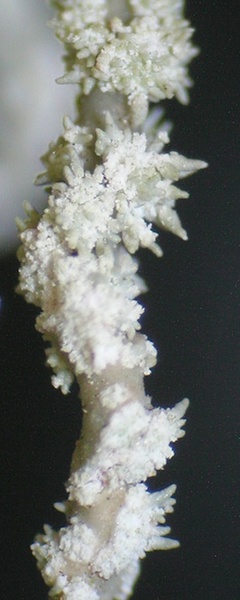
Tiiu Tõrra; Owner: Tiiu Tõrra - Institute of Ecology and Earth Sciences, University of Tartu, Estonia
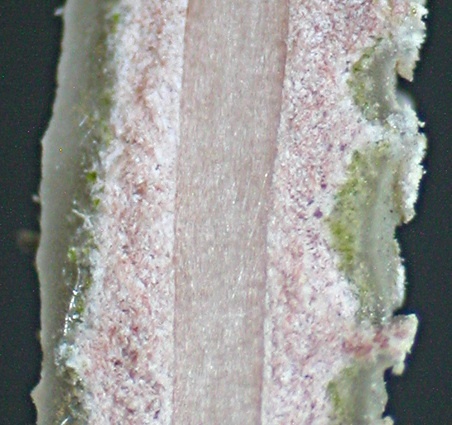
Tiiu Tõrra; Owner: Tiiu Tõrra - Institute of Ecology and Earth Sciences, University of Tartu, Estonia
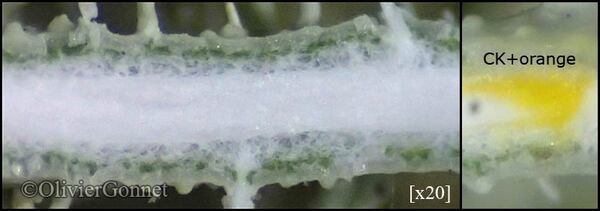
Courtesy Danièle et Olivier Gonnet - Source: hhttps://www.afl-lichenologie.fr/Photos_AFL/Photos_AFL_U/Usnea_ceratina.htm
France, 25/5/2015 - session AFL dans le Lot - Saint-Soz
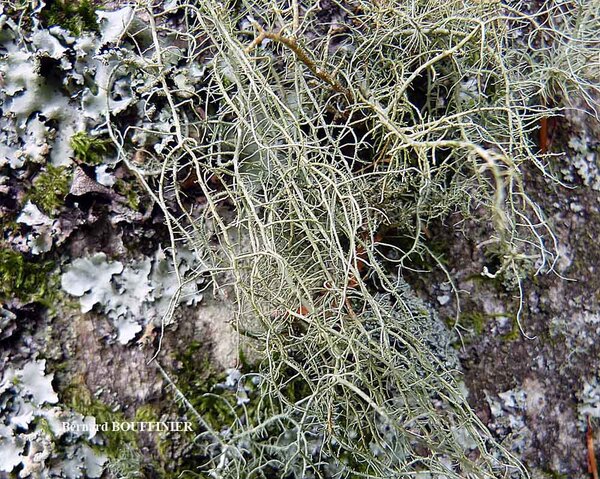
Bernard Bouffinier - Source: http://www.lichensmaritimes.org/index.php?task=fiche&lichen=603&lang=en
France, Scaër
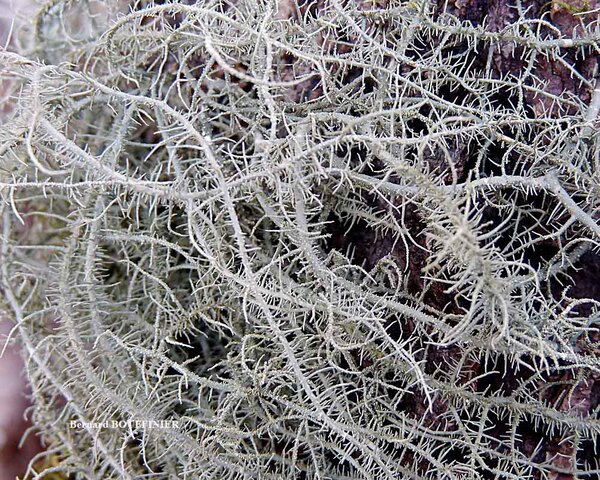
Bernard Bouffinier - Source: http://www.lichensmaritimes.org/index.php?task=fiche&lichen=603&lang=en
France, Forêt du Cranou

Michel David - Source: http://www.lichensmaritimes.org/index.php?task=fiche&lichen=603&lang=en
France, Forêt du Cranou
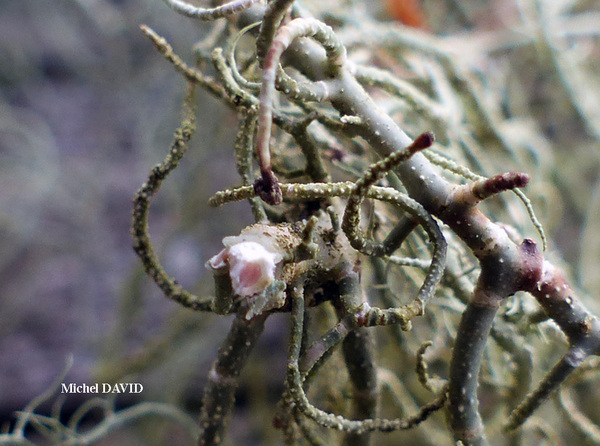
Michel David - Source: http://www.lichensmaritimes.org/index.php?task=fiche&lichen=603&lang=en
France, Forêt du Cranou
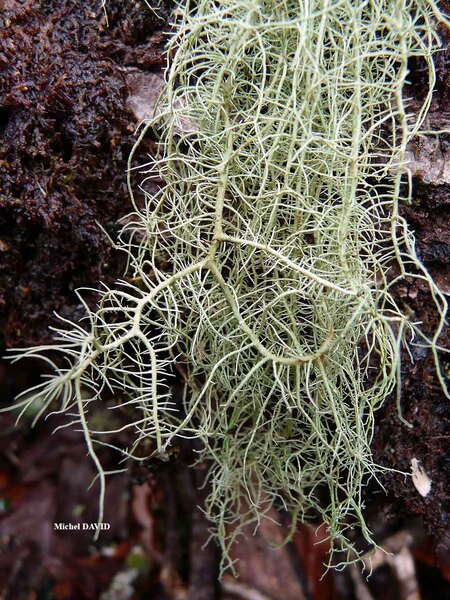
Michel David - Source: http://www.lichensmaritimes.org/index.php?task=fiche&lichen=603&lang=en
France, Forêt du Cranou
Growth form: Fruticose filamentous
Substrata: bark
Photobiont: green algae other than Trentepohlia
Reproductive strategy: mainly asexual, by thallus fragmentation
Commonnes-rarity: (info)
Alpine belt: absent
Subalpine belt: rather rare
Oromediterranean belt: rather rare
Montane belt: rather common
Submediterranean belt: extremely rare
Padanian area: absent
Humid submediterranean belt: very rare
Humid mediterranean belt: absent
Dry mediterranean belt: absent

Predictive model
| Herbarium samples |

Tiiu Tõrra; Owner: Tiiu Tõrra - Institute of Ecology and Earth Sciences, University of Tartu, Estonia

Tiiu Tõrra; Owner: Tiiu Tõrra - Institute of Ecology and Earth Sciences, University of Tartu, Estonia

Tiiu Tõrra; Owner: Tiiu Tõrra - Institute of Ecology and Earth Sciences, University of Tartu, Estonia

Tiiu Tõrra; Owner: Tiiu Tõrra - Institute of Ecology and Earth Sciences, University of Tartu, Estonia

Courtesy Danièle et Olivier Gonnet - Source: hhttps://www.afl-lichenologie.fr/Photos_AFL/Photos_AFL_U/Usnea_ceratina.htm
France, 25/5/2015 - session AFL dans le Lot - Saint-Soz

Bernard Bouffinier - Source: http://www.lichensmaritimes.org/index.php?task=fiche&lichen=603&lang=en
France, Scaër

Bernard Bouffinier - Source: http://www.lichensmaritimes.org/index.php?task=fiche&lichen=603&lang=en
France, Forêt du Cranou

Michel David - Source: http://www.lichensmaritimes.org/index.php?task=fiche&lichen=603&lang=en
France, Forêt du Cranou

Michel David - Source: http://www.lichensmaritimes.org/index.php?task=fiche&lichen=603&lang=en
France, Forêt du Cranou

 INDEX FUNGORUM
INDEX FUNGORUM
 GBIF
GBIF
 DOLICHENS
DOLICHENS
